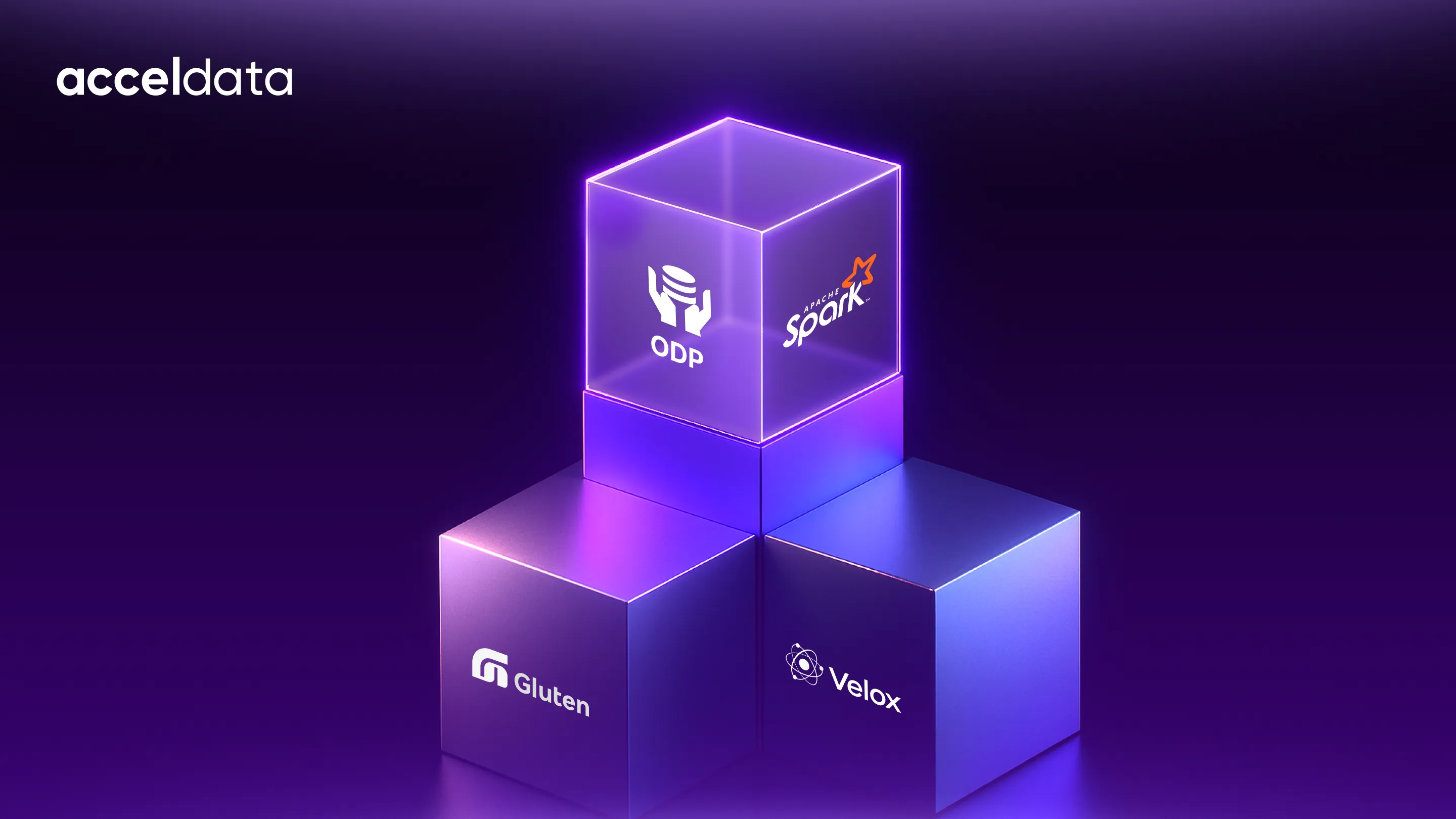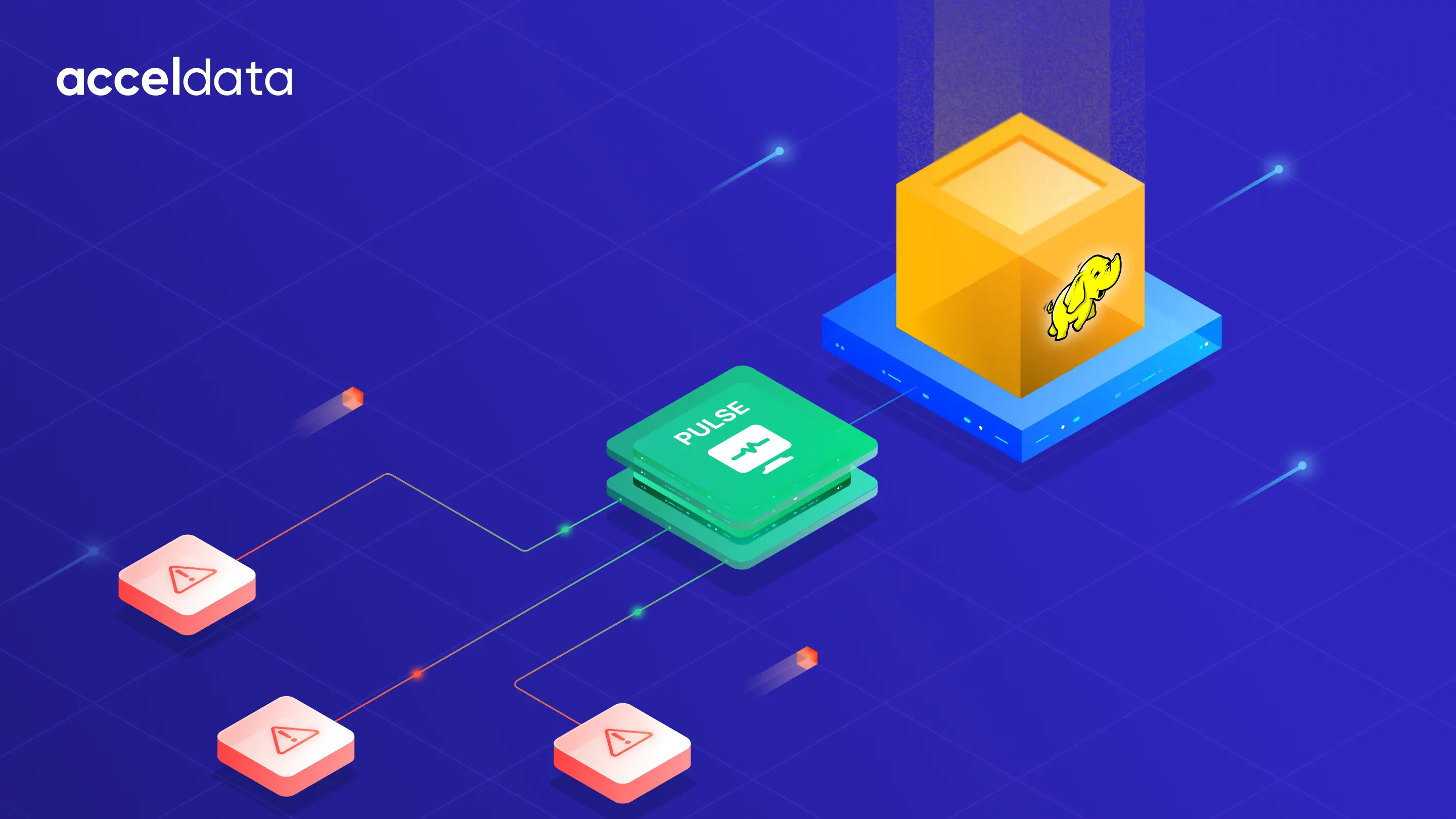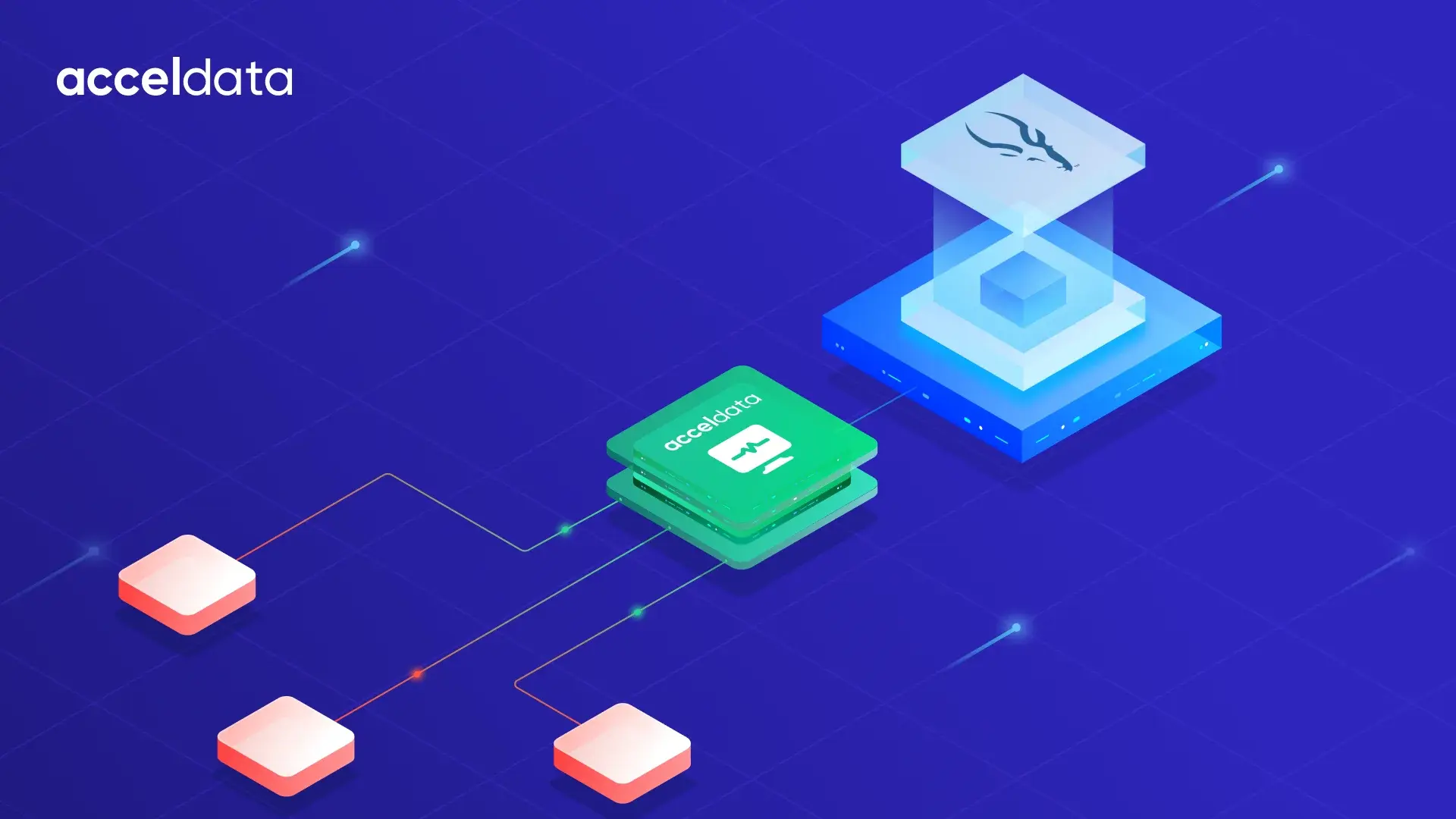Finding where your data comes from and how it changes can feel like searching for a book in a library with no catalog. You know the book exists, but you cannot trace its history or confirm its accuracy. This is what many businesses face when they cannot track their data’s journey.
Data lineage solves this problem. It works like a catalog for your data. It shows where data starts, how it moves, and how it changes along the way. With this map, businesses can trust their information, meet compliance standards, and solve problems faster.
This blog explains what data lineage is, why it matters, and how leading tools compare. You will also learn how to choose the right platform for your organization and why Acceldata is a strong choice for enterprise-grade lineage.
What Is Data Lineage and Why Does It Matter?
Data lineage is the practice of tracing the complete journey of data as it moves through an organization. It shows where the data originates, how it changes over time, where it is stored, and who uses it. In other words, it provides a clear and documented story of your data from the moment it is created until the point it is consumed.
Think of it as a GPS for your data. Just like a navigation system shows you the starting point, the route taken, and the final destination, data lineage gives you visibility into how your data travels across systems. This clarity helps organizations trust their information, avoid confusion, and make smarter decisions.
Data lineage matters because it makes data reliable and accountable. When teams know the history of their data, they can confirm its accuracy, meet compliance requirements, and quickly resolve problems when something breaks.
For example, if a business report shows inconsistent results, data lineage helps teams trace the issue back to its exact source, whether that is a faulty integration, a transformation error, or incorrect input data. This saves time, reduces risk, and ensures that everyone is working with the same trusted information.
Why Data Lineage Is Essential for Businesses Today
Every modern business relies on data to make decisions, serve customers, and stay competitive. But the sheer volume and complexity of data today make it difficult to manage without the right systems in place. When organizations cannot see the complete path of their data, they risk working with information that is incomplete, outdated, or even incorrect. This leads to poor decision-making, compliance risks, and wasted time. Data lineage solves these challenges by giving businesses clarity and confidence.
Here are the key reasons why data lineage has become essential:
- Transparency: Data lineage makes it clear where data comes from, how it has been transformed, and how it is being used. This visibility helps everyone in the organization trust the accuracy of the information they are working with.
- Compliance: Regulations such as GDPR, HIPAA, and CCPA require organizations to show accountability in how they collect, store, and use data. Data lineage makes compliance easier by providing a documented trail of data movement and transformations, which auditors can review when needed.
- Troubleshooting: When something goes wrong in a report or a dashboard, teams often waste hours trying to find the root cause. Data lineage allows them to trace the issue back to its origin quickly. This speeds up problem resolution and minimizes disruption to the business.
- Governance and Quality: Good governance depends on accurate and auditable data. Data lineage supports this by ensuring that organizations can monitor how data changes over time and identify errors, duplicates, or inconsistencies. This improves the overall quality of data and keeps it reliable for decision-making.
- Collaboration: Different teams across an organization often rely on the same data, but misunderstandings can occur if they do not have a shared view of it. Data lineage gives all teams access to the same clear picture of data flows, which improves communication and helps them work together more effectively.
In short, data lineage has shifted from being a “nice-to-have” capability to becoming a core requirement for modern enterprises. It ensures data is trustworthy, compliant, and usable across the business.
Core Features to Look for in Data Lineage Tools
Not every data lineage tool is built the same way. Some provide only basic tracking, while others offer a more complete set of features that support enterprise-level needs. To choose the right solution, it helps to understand the core capabilities that make these tools valuable.
Here are the features you should look for:
- Automated Data Discovery and Mapping
A strong tool should automatically scan your systems, identify data sources, and map how the data flows. This reduces the need for manual work, which is often slow and error-prone. Automation ensures that lineage maps stay accurate even as your systems change and grow.
- Clear and Easy-to-Read Visualizations
Lineage is easier to understand when presented visually. Good tools provide clear maps, diagrams, or dashboards that show how data moves from one system to another. This helps both technical teams and business users see the big picture without having to dig into complex code or processes.
- Metadata Tracking and Audit Trails
Tracking metadata is critical for understanding not just where data is, but how it has changed over time. Audit trails provide a documented history of every transformation and movement. This level of detail makes compliance reporting easier and builds confidence that data is accurate and accountable.
- Seamless Integrations
A useful lineage tool should connect with your existing data environment, including databases, ETL tools, business intelligence platforms, and cloud systems. Seamless integration prevents data silos and ensures you have one unified view of all your data flows.
- Scalability
As your organization grows, your data ecosystem becomes more complex. A tool that works for a small team today should also be able to handle higher volumes, more systems, and larger user groups in the future. Scalability ensures your investment is sustainable and continues to provide value.
When combined, these features give organizations both visibility and reliability. They allow businesses to trust their data, manage compliance, and support decision-making with confidence.
Types of Data Lineage Tools: Open-Source, Commercial, and Cloud-Based
Data lineage tools come in different forms, and each type serves a specific purpose. Choosing the right one depends on your organization’s needs, technical skills, and long-term goals. Let us look at the main categories and what they offer.
- Open-Source Tools
Open-source lineage tools are often the most budget-friendly option. They are freely available and can be customized to fit unique requirements. This flexibility makes them attractive for organizations that have strong technical teams who can manage setup, integration, and ongoing maintenance. However, since support usually comes from community forums rather than dedicated vendors, businesses need in-house expertise to get the most value from these tools.
- Commercial Tools
Commercial tools are developed and supported by vendors, and they usually come with a wide range of advanced features. These tools often include intuitive interfaces, automation, and enterprise-grade security. They are built to handle large-scale data environments and usually provide customer support, training, and regular updates. For organizations that need reliability, speed of deployment, and vendor-backed support, commercial tools can be an ideal choice, although they do involve licensing costs.
- Cloud-Based Tools
Cloud-based lineage tools are designed for organizations that already use or are moving toward cloud-first data environments. They integrate smoothly with cloud platforms and offer real-time mapping of data flows. Their biggest strengths are scalability and flexibility, as they can expand with growing data volumes without heavy infrastructure costs. These tools are especially useful for businesses that want modern, on-demand solutions without the burden of maintaining hardware or on-premises systems.
In the end, the right choice depends on your budget, your technical resources, and your overall data strategy. If your organization has skilled engineers and limited funds, open-source may be a good fit. If you want advanced features with strong support, commercial options make sense. If your company is already cloud-focused, cloud-native tools provide scalability and speed.
Comparison of the Best Data Lineage Tools
With so many data lineage tools available, it can feel overwhelming to decide which one is right for your organization. Each tool comes with unique strengths, and the best choice often depends on your specific use case, budget, and technical environment. Below is a closer look at some of the most popular tools and what they offer.
1. Acceldata
- Best For: Enterprises that need real-time lineage and intelligent monitoring.
- Key Strengths:
- Continuously maps data flows across complex systems.
- Uses AI agents to detect issues and trigger troubleshooting automatically.
- Helps teams quickly trace root causes and maintain trusted pipelines.
- Why It Stands Out: Acceldata goes beyond visualization by combining lineage with intelligence, making it ideal for fast-moving enterprises that want proactive monitoring and reduced downtime.
2. Apache Atlas
- Best For: Organizations managing large-scale big data environments.
- Key Strengths:
- Open-source and highly flexible.
- Integrates well with Hadoop, Hive, HDFS, and Spark.
- Provides centralized metadata and governance capabilities.
- Why It Stands Out: Apache Atlas is best suited for businesses already working with the Hadoop ecosystem and those who want a no-cost but technically intensive solution.
3. Alation
- Best For: Teams focused on collaboration and data intelligence.
- Key Strengths:
- Strong data catalog and governance features.
- Easy search and discovery functions for business users.
- Promotes teamwork with annotations and shared data context.
- Why It Stands Out: Alation shines in environments where collaboration and easy access to data are just as important as governance.
4. Collibra
- Best For: Enterprises prioritizing governance, compliance, and workflow automation.
- Key Strengths:
- End-to-end data lineage with detailed tracking.
- Workflow automation for stewardship, compliance, and approvals.
- Strong integration across hybrid systems.
- Why It Stands Out: Collibra is widely trusted by large organizations that need robust governance frameworks and compliance support.
5. Informatica
- Best For: Hybrid and multi-cloud data environments.
- Key Strengths:
- Automated scanning and metadata management.
- AI-driven data catalog for faster discovery.
- Comprehensive support for diverse systems and platforms.
- Why It Stands Out: Informatica has a long-standing reputation in enterprise data management and is especially valuable for organizations managing both on-premises and cloud systems.
6. Talend
- Best For: Organizations heavily focused on ETL and integration workflows.
- Key Strengths:
- Built-in data quality, profiling, and cleansing tools.
- Lineage tracking embedded directly in ETL processes.
- Supports both cloud-based and on-premises environments.
- Why It Stands Out: Talend simplifies operational efficiency by combining integration, quality, and lineage in one solution, making it useful for data teams that prioritize reliability.
7. MANTA
- Best For: Businesses that need deep impact analysis and visibility into complex dependencies.
- Key Strengths:
- Highly detailed lineage across multiple platforms.
- Strong cross-platform visibility, including legacy systems.
- Supports governance by integrating with platforms like Collibra and Alation.
- Why It Stands Out: MANTA excels in helping organizations understand the ripple effects of data changes, making it a strong choice for enterprises with complicated ecosystems.
Quick Comparison Table: Best Data Lineage Tools for your Business
This comparison highlights that while all of these tools help track and manage data lineage, their strengths differ. Some focus on collaboration, others on compliance, and some on advanced automation. The best choice depends on your organization’s specific needs and resources.
How to Choose the Right Data Lineage Tool for Your Business
Selecting the right data lineage tool can feel like a big decision, and it is one that can significantly impact how your organization manages and trusts its data. The best way to approach this process is to look closely at your current needs, your long-term goals, and how well different tools fit into your existing environment.
Here are some important factors to consider when evaluating your options:
- Your Data Sources and Volume
Start by looking at the types of data systems you use, such as databases, ETL pipelines, and business intelligence platforms. Make sure the tool you choose can connect to all of these sources. Also think about how much data your organization processes today and how much it is likely to grow in the future. A tool that cannot scale with your data will quickly become a limitation.
- Automation and Visualization
One of the main benefits of a good lineage tool is automation. Manual mapping of data flows is not only time-consuming but also prone to errors. Look for a tool that can automatically discover, track, and update lineage information. Clear visualizations, such as diagrams or dashboards, will also make it easier for both technical and non-technical users to understand how data moves through the organization.
- Integration with Your Tech Stack
A lineage tool should work smoothly with your existing technologies. Consider whether it integrates with your databases, ETL tools, cloud platforms, and reporting systems. Seamless integration prevents silos and ensures that you can view all data flows in one place instead of across multiple disconnected systems.
- Governance and Compliance
Strong governance is essential in today’s regulatory environment. A good lineage tool should support features such as data tagging, policy enforcement, and audit trails. These capabilities help demonstrate compliance with standards like GDPR or HIPAA and reduce the risks of non-compliance.
- Ease of Use and Adoption
Even the most powerful tool will not be effective if it is too difficult to use. Look for solutions with intuitive interfaces that both technical experts and business teams can understand. Features like dashboards, search functions, and collaboration tools can encourage adoption across the organization.
Why This Checklist Matters
Following a checklist like this helps you focus on what really matters. It ensures you do not get distracted by features that look impressive but do not address your core needs. By matching the tool’s strengths with your organization’s priorities, you can make a confident decision and ensure that your investment delivers long-term value.
Why Enterprises Choose Acceldata for Data Lineage
Managing data without lineage is like driving on a busy highway without road signs. You may reach your destination, but the journey is uncertain, slow, and full of risks. This is where Acceldata makes a difference. It gives organizations a clear and dependable view of how data moves across their systems, helping them build trust, ensure compliance, and improve efficiency.
Here are the key reasons enterprises choose Acceldata for data lineage:
- Automated End-to-End Mapping
Acceldata continuously maps data flows in real time across platforms such as Snowflake, Databricks, Salesforce, and many others. Instead of relying on manual updates that quickly become outdated, organizations get an accurate, always-current view of their entire data ecosystem.
- Faster Root Cause Analysis
When a report shows an error or a dashboard breaks, most teams spend hours or even days searching for the problem. Acceldata shortens this process by allowing teams to trace issues back to their source within seconds. This not only saves valuable time but also reduces business disruption and builds confidence in data-driven decisions.
- Agentic Intelligence
Acceldata goes beyond visualization by using intelligent AI agents that actively monitor data flows. These agents analyze dependencies, detect anomalies, and trigger proactive alerts before small issues become major problems. For example, if a change in a database field could affect a compliance report, Acceldata flags it immediately so teams can respond quickly.
- Enterprise Scale
Modern enterprises deal with complex ecosystems that often span multiple industries, geographies, and regulations. Acceldata is built to handle this scale. It supports structured and semi-structured data, works across hybrid and multi-cloud environments, and provides user-friendly interfaces for both technical and business users. Whether in finance, healthcare, retail, or telecom, Acceldata adapts to the needs of large organizations.
The Bottom Line
For enterprises that prioritize trust, compliance, and speed, Acceldata provides a data lineage solution that is not only powerful but also practical. It reduces the burden of manual monitoring, improves accuracy, and ensures that teams always have a clear view of how data is moving and changing. By combining automation with intelligence, Acceldata helps organizations stay ahead of challenges and focus on what matters most—using data to create value.
ROI of Investing in the Right Data Lineage Tool
Investing in the right data lineage tool is not just about adding another piece of technology to your stack. It is about improving efficiency, reducing risks, and strengthening decision-making across the organization. When used effectively, the right tool delivers a measurable return on investment that impacts both operational and financial performance.
Here are some of the key ways it creates value:
- Reduce Downtime with Faster Troubleshooting
Data errors or broken reports can disrupt business operations and delay critical decisions. A strong lineage tool allows teams to quickly trace the issue back to its source, cutting resolution time from days to minutes. Less downtime means smoother operations and fewer costly interruptions.
- Lower Compliance Risks and Avoid Penalties
Regulations such as GDPR, HIPAA, and CCPA require clear documentation of how data is handled. A lineage tool provides detailed audit trails and accountability, which reduces the risk of non-compliance. This not only protects your organization from legal penalties but also builds trust with regulators, partners, and customers.
- Improve Productivity with Less Manual Effort
Manual tracking of data flows is slow, repetitive, and error-prone. Automation in lineage tools eliminates this burden, freeing teams to focus on higher-value work such as analysis, innovation, and strategy. This shift leads to significant productivity gains across technical and business teams.
- Boost Trust in Business Decisions with Accurate Data
Leaders can only make the right calls if they trust the data in front of them. Data lineage ensures that everyone—from analysts to executives—can see where data came from, how it was transformed, and whether it is reliable. This confidence leads to better, faster, and more informed decision-making.
The Bottom Line
The benefits of a strong data lineage tool go far beyond technical improvements. By reducing downtime, ensuring compliance, improving productivity, and building trust in data, organizations see clear financial and strategic returns. These outcomes directly translate into measurable ROI, making data lineage not just a technology investment but a business necessity.
Conclusion
Data lineage is no longer a nice-to-have feature. It has become a core requirement for enterprises that depend on accurate, compliant, and high-quality data. Without it, organizations face unnecessary risks, wasted time, and a lack of confidence in the information that drives their most important decisions.
The right data lineage tool helps reduce errors, strengthens collaboration across teams, and ensures that every insight and report is built on a foundation of trusted data. It transforms how businesses manage their information by creating transparency, improving compliance, and enabling faster problem-solving.
For organizations that are exploring solutions, Acceldata’s Agentic Data Management platform provides an intelligent and scalable approach. It delivers real-time lineage, automation, and enterprise-grade reliability while reducing the burden on your teams. This means your business can stay focused on growth and innovation rather than troubleshooting data issues.
If you would like to see how this works in practice, you can schedule a demo to explore how Acceldata supports your data environment and business goals.
This post was written by Mercy Kibet. Mercy is a full-stack developer with a knack for learning and writing about new and intriguing tech stacks.
Frequently Asked Questions (FAQs)
1. What is data lineage and why is it important for enterprises?
Data lineage is the process of tracking how data moves, transforms, and is used across an organization. It is important because it builds trust in data, ensures compliance with regulations, and helps businesses make decisions with confidence.
2. How does data lineage improve data quality and governance?
By showing the complete journey of data, lineage tools highlight errors, duplicates, or inconsistencies. This transparency strengthens governance practices and improves the overall accuracy and reliability of business data.
3. What are the key features to look for in a data lineage tool?
The most effective tools include automated discovery, clear visualizations, metadata tracking, seamless integrations, and scalability. These features ensure that lineage information remains accurate, auditable, and easy to use.
4. What is the difference between open-source, commercial, and cloud-based data lineage tools?
Open-source tools are cost-effective but require technical expertise. Commercial tools provide advanced features and vendor support, while cloud-based tools are built for real-time, scalable data environments with lower infrastructure costs.
5. How do data lineage tools help with compliance regulations like GDPR and HIPAA?
Lineage tools provide audit trails and documentation that show where data comes from, how it is processed, and how it is stored. This makes it easier for organizations to prove compliance and avoid regulatory penalties.
6. How can businesses calculate ROI from investing in data lineage?
ROI can be measured by reduced downtime, faster troubleshooting, lower compliance risks, and improved productivity. These benefits lead to cost savings and stronger business performance.
7. Which industries benefit most from advanced data lineage solutions?
Industries such as finance, healthcare, retail, and telecom benefit the most. These sectors rely on accurate, traceable, and compliant data to operate effectively and meet regulatory requirements.
8. What makes Acceldata different from other data lineage platforms?
Unlike traditional tools that only show static lineage maps, Acceldata offers real-time lineage powered by intelligent AI agents. It not only visualizes data flows but also detects issues, traces root causes, and triggers proactive alerts across complex enterprise ecosystems.
9. How does Acceldata use AI to improve data lineage and observability?
Acceldata’s Agentic Data Management platform uses AI agents that reason over data flows, detect anomalies, and collaborate across compliance and quality systems. This intelligent approach helps enterprises resolve issues faster and maintain trust in their data.
10. Why should enterprises choose Acceldata for data lineage and observability?
Acceldata provides end-to-end visibility, faster root cause analysis, and enterprise-grade scalability. It combines automation with AI intelligence, making it a practical solution for organizations that want to reduce risks, improve compliance, and gain confidence in their data.
















.webp)
.webp)


